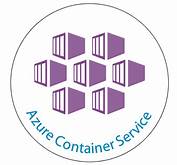Microsoft Azure Containers Keep Your Organization Efficient
There are a variety of apps your business needs to run to keep up with your operations. However, you don’t need them all running all the time, but you do need them to work when you need them too. For these reasons, you should check out the performance capabilities of Microsoft Azure containers. Containers are encapsulated, individually deployable components that run as isolated instances on the same kernel to take advantage of virtualization that an operating system provides. Each application and its run-time, dependencies and system libraries run inside a container with full, private access to the container’s own isolated view of operating system constructs. Along with portability, this degree of security and resource isolation is the main benefit for using containers with Service Fabric, which otherwise runs services in processes.

Containers are a virtualization technology that virtualizes the underlying operating system from applications. Containers provide an immutable environment for applications to run with varying degrees of isolation. Containers run directly on top of the kernel and have an isolated view of the file system and other resources. Compared to virtual machines, containers have the following advantages:
- Small size — Containers use a single storage space and layer versions and updates to increase efficiency.
- Speed — Containers don’t have to boot an entire operating system, so they can start much faster, typically in seconds.
- Portability — A containerized application image can be ported to run in the cloud, on premises, inside virtual machines, or directly on physical machines.
- Resource governance — A container can limit the physical resources that it can consume on its host.
Here are a few examples of best uses of containers:
- IIS lift and shift — If you have existing ASP.NET MVC apps that you want to continue to use, put them in a container instead of migrating them to ASP.NET Core. These ASP.NET MVC apps depend on Internet Information Services. You can package these applications into container images from the precreated IIS image and deploy them with Service Fabric.
- Mix containers and Service Fabric microservices — Use an existing container image for part of your application.
- Reduce impact of “noisy neighbors” services — You can use the resource governance ability of containers to restrict the resources that a service uses on a host. If services might consume many resources and affect the performance of others (such as a long-running, query-like operation), consider putting these services into containers that have resource governance.
2W Tech has IT Consultants on staff who are Microsoft Certified experts. They can guide you through your Azure cloud deployment and subsequent use of Microsoft Azure containers. Contact us today to learn more about Microsoft Azure.
Read More:
Big Data Turns Actionable with Data Analytics
High Cost of Delaying an Epicor Upgrade
Azure Guide to Cross-Platform and Open Source
Interested in reading this article? Click the button below to download this asset.
Download “Azure Guide to Cross-Platform and Open Source” Now
Azure Guide to Cross-Platform and Open Source
Please complete the form to download the file.